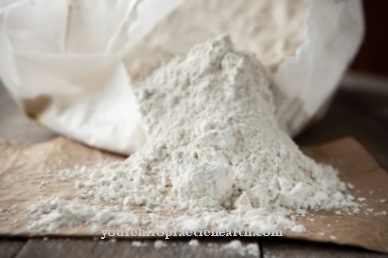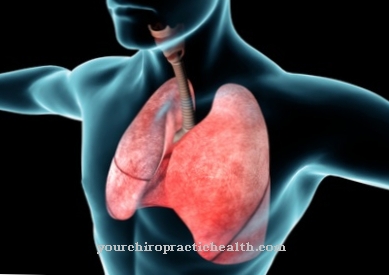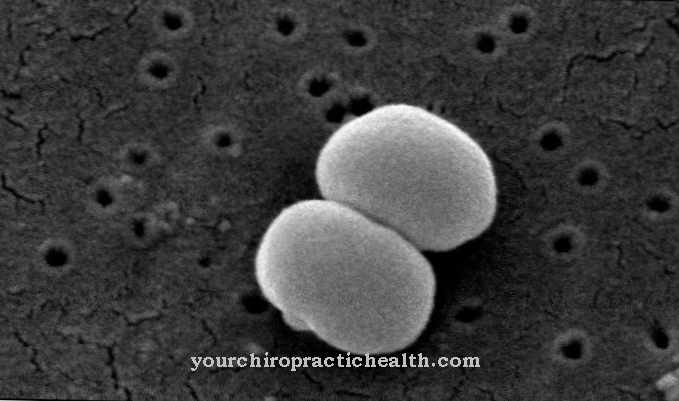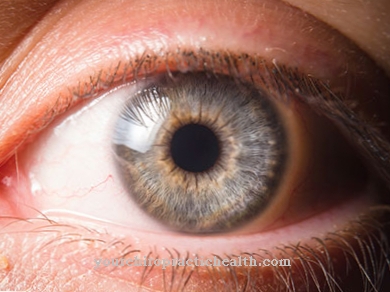Condoms are aids for contraception and to prevent the transmission of sexually transmitted diseases. The thin rubber covers are slipped over the erect penis and prevent the sperm from penetrating the female body. Condoms are one of the most popular contraceptives because they are considered relatively safe when used correctly.
What are condoms?

At Condoms are thin rubber-latex sheaths (some of them also consist of polyurethane or polyethylene). These are pulled over the erect member before the sexual act and catch the sperm that escapes during ejaculation in a small balloon at the end of the condom.
In this way, pregnancy and infection with sexually transmitted diseases can be avoided. However, this only applies if used correctly:
If condoms are damaged by fingernails or the like when putting them on, or if they are not pulled over completely, protection can no longer be guaranteed. Condoms are freely available in pharmacies or drugstores.
Shapes, types & types
Condoms usually consist of a rubber-latex mixture. Since this can cause allergic reactions under certain circumstances, there are also models made of other plastics such as polyethylene or polyurethane.
Apart from that, condoms are made in different sizes, as the sizes of the male sexual organs also vary and a perfect fit is necessary for optimal protection. In order to meet the different demands of the users, there are condoms, among other things, with an extra lubricious coating, with felt pimples or in different flavors.
The condoms specially designed for anal intercourse are stronger than usual to ensure safety during this practice as well.
Structure, function & mode of operation
Condoms are sold rolled up and individually sealed. To use one, it must be carefully removed from the packaging. Care must be taken not to damage it with fingernails or anything else.
The thin rubber condom is then completely rolled over the erect penis before sexual intercourse occurs. For this purpose, the condom is open at the lower end and equipped with a sturdy rubber ring to ensure that it is held firmly to the penis base. The upper end of the condom, which is located on the glans, opens into a small closed cavity. This is used to catch and lock in the sperm that escapes during ejaculation.
In this way it cannot penetrate the female body; unwanted pregnancies and the transmission of numerous sexually transmitted diseases can thus be avoided. Immediately after intercourse, the condom must be carefully removed before the penis relaxes, otherwise there is a risk of sperm escaping. Condoms can simply be disposed of with household waste after use. The washing out and reuse of used condoms should be strongly discouraged.
They should not be stored at either too high or too low temperatures, as these could affect the functionality and the guaranteed protection.
Medical & health benefits
Condoms fulfill two important functions, which is why they have long been one of the most popular contraceptives and are still used in large quantities.
On the one hand, if used correctly, they prevent unwanted pregnancies, since no sperm penetrates the female body and thus fertilization cannot take place. On the other hand, infection with sexually transmitted diseases such as HIV and hepatitis C can also be avoided in the same way. Because of this dual benefit, condoms are used by people in permanent partnerships, but also by people who frequently change sexual partners.
Proper storage and use of the condoms is of course always assumed. If pregnancy or disease transmission occurs despite the use of condoms, this is usually due to incorrect handling, incorrect storage or the selection of an unsuitable size, so that the condom slips or tears.
In order to minimize the risk of an unwanted pregnancy, other contraceptives such as the pill can be used in addition to a condom. However, this does not increase protection against possible infection with a sexually transmitted disease.












.jpg)

.jpg)




.jpg)


.jpg)





